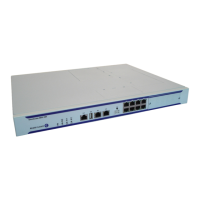Pseudowire Redundancy Service Models
Page 138 7750 SR OS Services Guide
Note that Figure 27 is merely an example and that the “Y” endpoint can also have a SAP and/or an
ICB spoke SDP. The following details the four types of endpoint objects supported and the rules
used when associating them with an endpoint of a VLL service:
• SAP — There can only be a maximum of one SAP per VLL endpoint.
• Primary spoke SDP — The VLL service always uses this pseudowire and only switches to
a secondary pseudowire when it is down the VLL service switches the path to the primary
pseudowire when it is back up. The user can configure a timer to delay reverting back to
primary or to never revert. There can only be a maximum of one primary spoke SDP per
VLL endpoint.
• Secondary spoke SDP — There can be a maximum of four secondary spoke SDP per
endpoint. The user can configure the precedence of a secondary pseudowire to indicate the
order in which a secondary pseudowire is activated.
• Inter-Chassis Backup (ICB) spoke SDP — Special pseudowire used for MC-LAG and
pseudowire redundancy application. Forwarding between ICBs is blocked on the same
node. The user has to explicitly indicate the spoke SDP is actually an ICB at creation time.
There are however a few scenarios below where the user can configure the spoke SDP as
ICB or as a regular spoke SDP on a given node. The CLI for those cases will indicate both
options.
A VLL service endpoint can only use a single active object to transmit at any given time but can
receive from all endpoint objects
An explicitly named endpoint can have a maximum of one SAP and one ICB. Once a SAP is
added to the endpoint, only one more object of type ICB spoke SDP is allowed. The ICB spoke
SDP cannot be added to the endpoint if the SAP is not part of a MC-LAG instance. Conversely, a
SAP which is not part of a MC-LAG instance cannot be added to an endpoint which already has an
ICB spoke SDP.
An explicitly named endpoint, which does not have a SAP object, can have a maximum of four
spoke SDPs and can include any of the following:
• A single primary spoke SDP.
• One or many secondary spoke SDPs with precedence.
• A single ICB spoke SDP.

